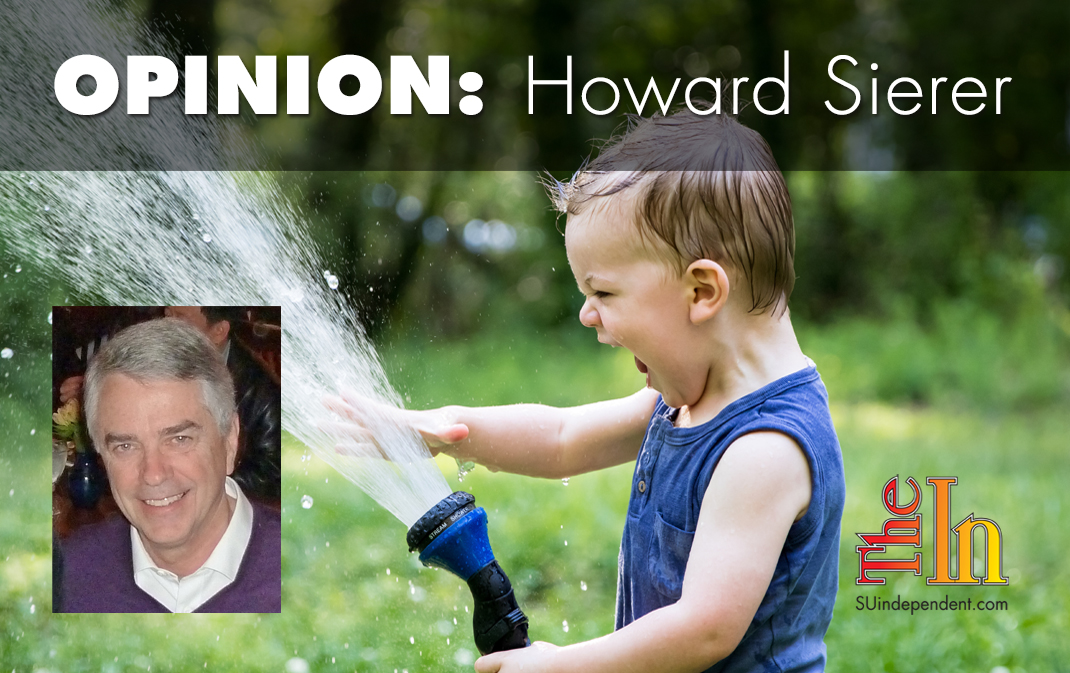
Debunking the Lake Powell Pipeline
Washington County is being sold a bill of goods by Lake Powell Pipeline advocates.
Too many of our elected officials are Lake Powell Pipeline fans. Behind the scenes, they’re supported by those with the most to gain from unbridled growth: developers, landowners, and construction companies.
Take a look at some of the faulty rationale being used to foist the pipeline on today’s water users.
Population growth
Let’s start by debunking current population growth forecasts.
The Kem C. Gardner Policy Institute, an arm of the University of Utah business school, forecasts that Washington County will have over 500,000 residents by 2065.
While its forecasts use a combination of factors such as net migration, life expectancy, fertility rates, and others, availability of water is ignored; Gardner’s projections just assume water will be available.
In turn, our Washington County Water Conservation District justifies the need for the pipeline as its only option to supply that many people. This prompts Gardner to stand by its forecast since the WCWCD will supply all the needed water.
This is an exercise in circular logic. A half a million Washington County residents are not inevitable; it depends on how much water we choose to provide.
Water source diversity
Turn now to Lake Powell Pipeline advocates’ claim that we need to diversify our water sources, that our dependence on the Virgin River basin alone is risky. They say adding the upper Colorado River basin as a water source will lower our risk.
The southwestern U.S. has been in a drought for most of the last 20 years. Lake Powell is lower today than it’s been since the years after it was formed in 1966. Yet we’re being asked to bet $3 billion that when there’s a drought in the Virgin River basin, the upper Colorado River basin will be unaffected.
No thanks.
Homes for extended families
Yet another argument for the Lake Powell Pipeline: A significant number of sincere Washington County residents want enough growth to allow their children and grandchildren to have places to live nearby. While their concerns are heartfelt, the end result of this sentiment is readily visible in the Los Angeles basin.
Building tract housing, strip malls, and gas stations limited only by when we run out of space will destroy the very reason why most of us live here today. Ask any of the hundreds of Los Angeles refugees who’ve moved here in the last decade.
Water conservation
Those who champion Washington County growth should get serious about conservation rather than a $3 billion pipeline. Serious water conservation would allow population to double, enough to keep developers happy building homes for extended families.
Washington County today uses 231 gallons per capita per day of potable water. Compare this with Tucson, where potable water use is about 122 GPCD.
Tucson has a similar climate, and its economy is likewise dependent on tourists, retirees, and snowbirds. While most readers of this column have chosen to live in southern Utah, Tucson is generally regarded as a desirable place to live with its pleasant climate, attractive neighborhoods, and the adjacent Catalina Mountains.
So why the difference in water use? The answer is simple: water rates.
A Tucson resident with modest landscape irrigation needs would pay about $20–$25 per month while a similar St. George resident pays the city’s minimum monthly charge of $24.72.
Tucson’s average resident uses about 6,000 gallons per month, paying about $38. A St. George resident using 6,000 gallons per month pays $26.
Tucson discourages excessive water use by applying steeply increasing costs to those with large water demands. A Tucson resident using 45,000 gallons per month pays almost $600 while a St. George resident using the same amount would pay less than $100.
The upshot: Most Tucson residents have modest lawns or choose xeriscaping. Contrast that with the large number of Washington County residents with large, lavishly watered lawns.
Bottom line: This is the desert. If we want to conserve water, there is no better way than sharply increasing rates with usage. Talking about conservation is nice, but nothing makes the point better than the pocketbook.
To ease the transition, income-based financial assistance could be provided to homeowners who want to convert to low irrigation landscaping. That assistance would cost far less than the pipeline.
No public vote needed
Our elected officials are debating whether they’ll put the Lake Powell Pipeline to a public vote. We voted on $125 million in school bonds. But somehow, the WCWCD board thinks it alone should make the call on the $3 billion pipeline!
I’m willing to live with the results of a public Lake Powell Pipeline vote. But if we’re not given a chance to vote, you’ll know the fix is in: Developers call the shots in Washington County, not the voters.
The viewpoints expressed above are those of the author and do not necessarily reflect those of The Independent.
How to submit an article, guest opinion piece, or letter to the editor to The Independent
Do you have something to say? Want your voice to be heard by thousands of readers? Send The Independent your letter to the editor or guest opinion piece. All submissions will be considered for publication by our editorial staff. If your letter or editorial is accepted, it will run on suindependent.com, and we’ll promote it through all of our social media channels. We may even decide to include it in our monthly print edition. Just follow our simple submission guidelines and make your voice heard:
—Submissions should be between 300 and 1,500 words.
—Submissions must be sent to editor@infowest.com as a .doc, .docx, .txt, or .rtf file.
—The subject line of the email containing your submission should read “Letter to the editor.”
—Attach your name to both the email and the document file (we don’t run anonymous letters).
—If you have a photo or image you’d like us to use and it’s in .jpg format, at least 1200 X 754 pixels large, and your intellectual property (you own the copyright), feel free to attach it as well, though we reserve the right to choose a different image.
—If you are on Twitter and would like a shout-out when your piece or letter is published, include that in your correspondence and we’ll give you a mention at the time of publication.
Articles related to “Debunking the Lake Powell Pipeline”
Lake Powell Pipeline pipedream is nothing more than a nightmare




It’s not often I see eye to eye with Howard, but I do on this topic.
Howard, thanks for this great piece on the LPP. I will also add that when the project started the licensing process in 2008 the 2060 population projection was 860,000 in Washington County! The latest Kem C. Gardner projection (even with the questions you ask) is around 500,000 in 2060. So, we have come down over 300,000 people from earlier projections, and yet, leaders are still screaming for the LPP to be built on our backs when many, perhaps even most of us, would prefer to conserve before putting our state and county in debt. As for their wanting their progeny and other family to live here, they are helping to price them out of the market through impact fees. Perhaps those leaders will front the cost of those homes for their own, but not everyone has the ability to do that. Even our service employees including law enforcement and fire are being priced out. The fact is that egos are so involved in this project at this point that those who came up with this scheme and those who have stepped into their shoes are not going to let it go until someone else wrests it from their fierce, unyielding, unreasonable grip.
Well well, Howard. I wasn’t sure I’d see the day that I agree with one of your opinions but I gotta say, you are spot on here.
And I especially like the way you wrapped it up:
“the fix is in: Developers call the shots in Washington County, not the voters.”
That statement could not be more accurate. I know first hand.
Thank you for a well-thought and focused opinion.
Howard.
Excellent opinion! As a geologists I’ve been pointing this problem out for some time.
There is also a group of geologists/hydrologists here in St. George who have also been
looking into the pipeline project and other water resources such as the Virgin River.